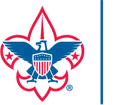Pioneering
Pioneering: Building with Knots and Lashings
Pioneering is one of the most hands-on and creative Scout skills. Using ropes, knots, and wooden poles, Scouts construct structures such as bridges, towers, or camp gadgets that are both functional and fun. Pioneering combines engineering, teamwork, and outdoor survival skills, making it a rewarding challenge for Scouts of all ages. By learning pioneering, Scouts develop their abilities in problem-solving, knot-tying, and lashings, while also improving their leadership and teamwork.
What is Pioneering?
Pioneering involves building large, sturdy structures using only natural materials and ropes. The goal is to construct useful items like camp chairs, gateways, bridges, or even towers. This skill requires a solid understanding of knots and lashings, along with creative thinking and careful planning. Pioneering projects are not just fun—they also teach practical applications of engineering principles and encourage teamwork.
_Suggested Pictures:
- Scouts building a wooden tower with ropes and poles
- A completed pioneering structure like a bridge or gateway_
Youtube Video: “What is Pioneering? An Introduction to Scout Pioneering Projects”
Knots and Lashings
Mastering knots and lashings is the foundation of successful pioneering. Scouts learn how to tie basic knots like the square knot, clove hitch, and bowline, along with specialized lashings such as the square, diagonal, and shear lashing. These lashings hold poles together securely, allowing Scouts to build stable and safe structures. Proper technique is essential for a sturdy project, so practice is key.
_Suggested Pictures:
- A Scout tying a square lashing on two poles
- Different types of lashings labeled and shown in use on a structure_
Youtube Video: “How to Tie Basic Lashings for Pioneering Projects”
Planning a Pioneering Project
Before constructing a pioneering project, careful planning is necessary. Scouts must determine the materials needed, such as the type and length of poles, rope, and tools. It’s also important to decide on the purpose and design of the structure—whether it’s a bridge, tower, or camp gadget. By creating a clear blueprint and assigning roles within the team, the project can come together smoothly and efficiently.
_Suggested Pictures:
- A blueprint of a pioneering project drawn on paper
- A group of Scouts planning their pioneering structure around a campfire_
Youtube Video: “How to Plan a Pioneering Project: A Scout’s Guide”
Pioneering Structures: Bridges, Towers, and Camp Gadgets
Pioneering projects range from small camp gadgets, like tripods or flagpoles, to larger structures, such as bridges or towers. For example, Scouts may build a suspension bridge using only ropes and poles to cross a creek, or a signal tower to scout the surrounding area. Smaller projects might include building camp gadgets like wash stations or tables. The possibilities are endless with the right materials and skills.
_Suggested Pictures:
- Scouts crossing a pioneering bridge they built
- A signal tower constructed using pioneering techniques_
Youtube Video: “Top 5 Scout Pioneering Projects to Build at Camp”
Working as a Team
Teamwork is essential for a successful pioneering project. Building larger structures often requires multiple Scouts working together to lift, tie, and secure poles into place. By assigning specific roles and collaborating, Scouts learn the importance of communication and problem-solving. Teamwork not only makes the project go faster, but it also ensures safety and success.
_Suggested Pictures:
- Scouts working together to lift poles into place for a structure
- A group of Scouts tying lashings while working on a bridge_
Youtube Video: “Teamwork in Pioneering: How Scouts Work Together”
Safety in Pioneering
Safety is a top priority in pioneering, especially when building large structures. Scouts are taught to wear gloves, be cautious with tools like saws or mallets, and ensure lashings are tight and secure before putting weight on a structure. Regularly checking the stability of the project and testing it for safety is crucial. Always work under the supervision of an experienced leader to ensure everyone’s safety.
_Suggested Pictures:
- A Scout wearing gloves while tying a lashing
- A group of Scouts inspecting the safety of their completed structure_
Youtube Video: “Pioneering Safety Tips for Scouts”
Pioneering Competitions and Challenges
Many Scout troops hold pioneering competitions, where teams compete to build the best structure in a limited amount of time. These challenges encourage creativity, speed, and precision, while reinforcing the skills learned during practice. Pioneering competitions are a fun way for Scouts to showcase their abilities and take pride in their work.
_Suggested Pictures:
- Scouts competing to build a tower during a pioneering challenge
- A finished pioneering project on display for a competition_
Youtube Video: “Pioneering Challenges: Tips for Success”
Leave No Trace in Pioneering
Scouts follow Leave No Trace principles when building pioneering projects, ensuring that the environment is left as it was found. This means using natural materials responsibly, dismantling structures after use, and packing out any trash or debris. Practicing environmental stewardship is an essential part of pioneering, ensuring that future Scouts can enjoy the same outdoor spaces.
_Suggested Pictures:
- Scouts dismantling a pioneering structure at the end of camp
- A clean, undisturbed campsite after a pioneering project was removed_
Youtube Video: “Leave No Trace Pioneering: Respecting the Environment”
Pioneering is more than just building—it’s about creativity, teamwork, and using your skills to solve challenges in the outdoors. Whether constructing a large bridge or a simple camp gadget, pioneering teaches Scouts how to work together, think critically, and leave no trace. Ready to get started? Check out the videos above and begin building your own pioneering masterpiece!


